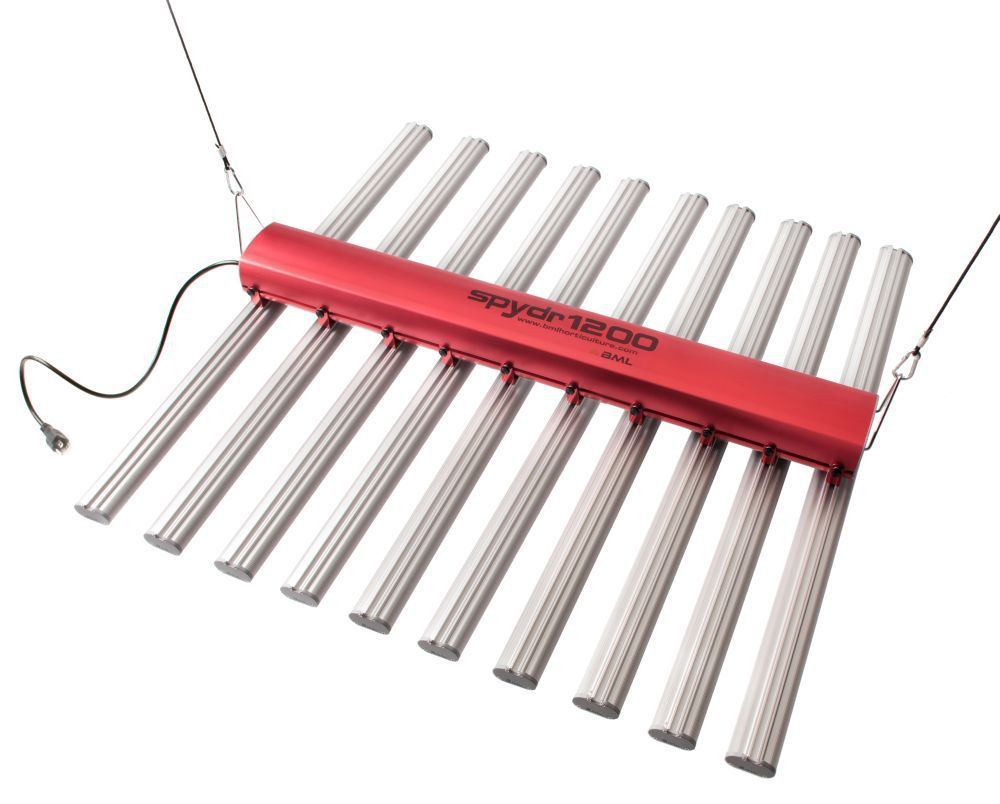DGP
- 1,214
- 263
When I started looking for thermal data on T-5 HO (54W) bulbs I could not find anything that described the thermal characteristics of T-5's. In other words, for a given power rating (54W) how much heat was added to the room from natural convection, from radiation and the inefficiencies of the electrical system (ballasts). I have read a number of articles and read some grow logs that seem to indicate high quality T-5 HO's can keep up with HPS with a lower overall heat load. I don't know, I am just experimenting.
I have seen so many arguments about how hot each type of lampo runs how efficient each one is but I just wanted to gather some real data and just see what they do one against the other in the same room with the same boundery conditions.
So, I have a room that is in a garage and is insulated top and sides to R11. The floor is concrete. It has a mini-split A/C unit in it. I used a 600W HPS on a light mover for the last grow but my A/C costs were real painful. So when SUmmer came I moved a group of girls outside in an enclosed locked area.
So, I ran an experiement running one fixture in the room and seeing how much that volume of air would heat up with no supplementary cooling. I used a commercial T-5 for my first run and it came out that with ballast inefficiencies etc there temperature rise was 2.5 to 3 degrees F per bulb.
Now I am re-running the test with Bad Boy T-5 fixtures to see if their claim of 30% efficiency gains are true.
I will also be running the same experiment with my 600 w HPS. I wanted to know for each watt consumed how much does a given lamp tecnology give you in heat increase per per cubic foot. The idea is to compare similar power levels. My 600 watt HPS is being compared to two 8 bulb T-5 fixtures which is more like 900 watts total.
The one good thing I see about T-5's is the light is distributed much more evenly over the 4 foot space and the reflectors on the bad boys seem very high quality. The HPS seems alot more point source and varies more over the area being lit.
I will post the graphs once they are done.
So far the rough data is:
Cheapo T-5 fixture: Raised the room temperature 3 degrees F per bulb or about .008 degees per cubic foot
The Bad Boys are running about: 1.25 to 1.5 Degrees F per bulb or about .004 degrees per cubic foot
The goal is to run the Fall, Winter and Spring grows during the cold weather and see if we can do it without any A/C or mybe rarely used A/C. My other hope is the heat from the bad Boys will be useful in the cooler months instead of having to run heaters as well.
This is with no A/C and no active venting.
DP
I have seen so many arguments about how hot each type of lampo runs how efficient each one is but I just wanted to gather some real data and just see what they do one against the other in the same room with the same boundery conditions.
So, I have a room that is in a garage and is insulated top and sides to R11. The floor is concrete. It has a mini-split A/C unit in it. I used a 600W HPS on a light mover for the last grow but my A/C costs were real painful. So when SUmmer came I moved a group of girls outside in an enclosed locked area.
So, I ran an experiement running one fixture in the room and seeing how much that volume of air would heat up with no supplementary cooling. I used a commercial T-5 for my first run and it came out that with ballast inefficiencies etc there temperature rise was 2.5 to 3 degrees F per bulb.
Now I am re-running the test with Bad Boy T-5 fixtures to see if their claim of 30% efficiency gains are true.
I will also be running the same experiment with my 600 w HPS. I wanted to know for each watt consumed how much does a given lamp tecnology give you in heat increase per per cubic foot. The idea is to compare similar power levels. My 600 watt HPS is being compared to two 8 bulb T-5 fixtures which is more like 900 watts total.
The one good thing I see about T-5's is the light is distributed much more evenly over the 4 foot space and the reflectors on the bad boys seem very high quality. The HPS seems alot more point source and varies more over the area being lit.
I will post the graphs once they are done.
So far the rough data is:
Cheapo T-5 fixture: Raised the room temperature 3 degrees F per bulb or about .008 degees per cubic foot
The Bad Boys are running about: 1.25 to 1.5 Degrees F per bulb or about .004 degrees per cubic foot
The goal is to run the Fall, Winter and Spring grows during the cold weather and see if we can do it without any A/C or mybe rarely used A/C. My other hope is the heat from the bad Boys will be useful in the cooler months instead of having to run heaters as well.
This is with no A/C and no active venting.
DP






